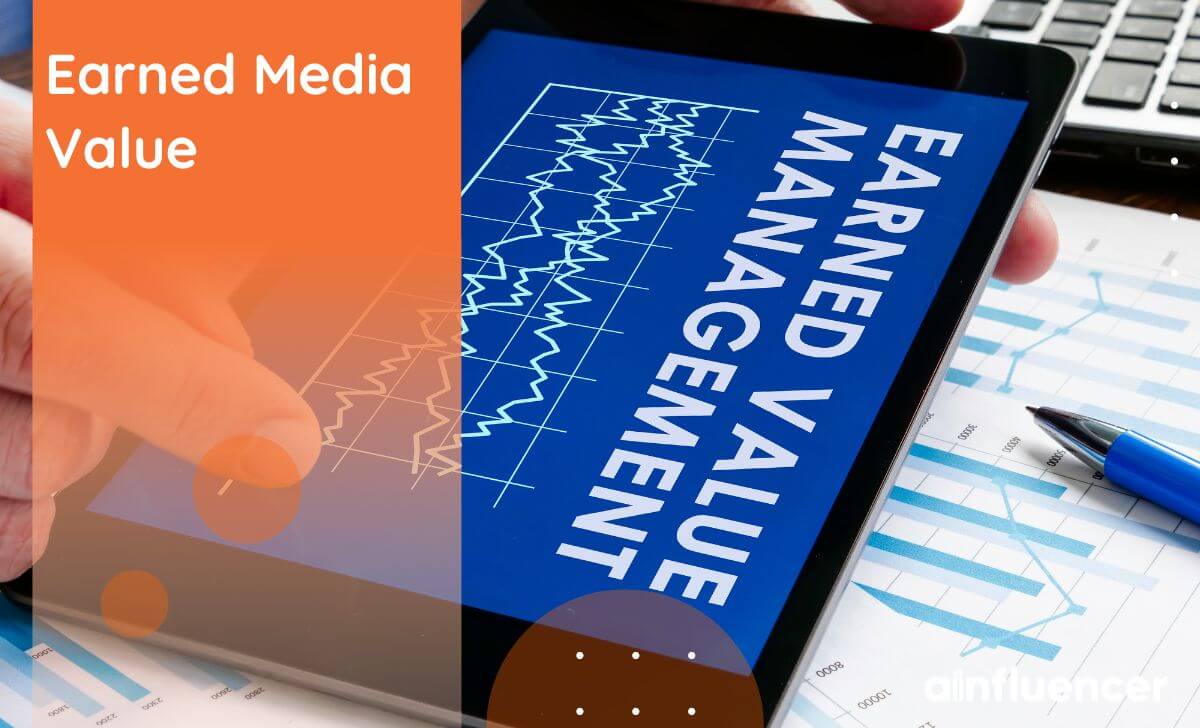Have you recently invested heavily in influencer marketing and are wondering how to evaluate your marketing effort performance? Earned Media Value, or EMV, is a popular measure of success in influencer campaigns, but many people must fully grasp it.
Earned media value (EMV) shows how PR and marketing efforts affect a company’s success. If your campaign does well, the EMV score will increase, showing better results in your goals and returns on investment. This applies to different measures of success. When EMV increases, it means having more leads, sales, and brand awareness.
In this article, we’ll provide a comprehensive guide to the value of earned media and how earned media value is calculated for the impact of your social media marketing strategy!
Let’s get started!
What Is Earned Media Value?
Let’s begin by understanding Earned Media in simple terms. It’s the attention a brand gets for free from customers, influencers, or people talking about it online. This attention comes from different media and ways that make the brand more well-known.
Earned media includes things like blog posts, when people recommend something to others, influencer marketing efforts, or when people share their opinions in reviews. ‘Earned’ means the exposure the brand gains naturally, unlike paid exposure through ads.
Let’s return to the earned media value definition. It’s a way to determine the worth of social media content about a brand. EMV looks at how people interact with content made by someone else, like an Instagram influencer or a brand. It includes posts from influencers, magazines, stores, and other brands. When people engage with this content, the value they add (EMV) is shared among all the brands mentioned in the post.
How to Calculate Earned Media Value?
You can’t just type your brand’s name into an earned media value calculator to see how well your social media marketing is doing, but it’s not a total mystery. A special formula called Earned Media Value (EMV) helps measure it.
To figure out earned media value (EMV), you can use a simple formula. First, you multiply the total number of times people see your campaign (impressions) by the average cost for every thousand impressions (CPM). Then, you multiply this by a number that accounts for things like how much people interact with your campaign (brand engagement metrics). The formula looks like this:
EMV = Impressions x CPM x Adjustment Variable
Three things affect EMV: where posts are shared (platforms), how much people interact with them(engagement), and who creates them (creators).
Different platforms have different values. For example, a YouTube video about your brand is worth more than a Tweet because it takes more effort to make and watch. EMV looks at posts on Instagram, YouTube, TikTok, Facebook, Pinterest, Twitter, blogs, and websites.
Most of a post’s value comes from how much people engage with it—like how many likes, comments, or shares it gets. EMV focuses on this interaction because it shows how much people care about the content, not just how many see it.
EMV also counts content from creators like influencers, brands, retailers, and publications. Influencers usually bring in the most value, but other creators can also contribute.
There’s no one perfect way to calculate EMV. Still, a common formula looks at impressions (how many times a post is seen), cost per 1,000 impressions (a standard metric), and adjustment factors (which can change depending on the situation).
To sum it up, brands need to consider impressions, engagement, and how their posts affect their overall online presence to get an accurate picture. They must also listen to what people say about them on social media.
Why Does Earned Media Value in Influencer Marketing Matter?
In this section, we‘ll cover the reasons why it’s an important metric for social media marketing:
1. Measurement of Engagement
It’s important to measure how much people interact with your brand. This includes things like likes, shares, comments, and mentions on social media. More people engage with your brand means more people see it, which could lead to more sales.
2. Influence of Influencers
Working with influencers who engage their followers heavily can help boost your marketing efforts. Influencers already have good relationships with their followers, so when they recommend your brand, it can be really helpful for getting the word out.
3. Optimizing Return on Investment (ROI)
Using tools to track how much people engage with your brand online can help you determine which partnerships work best. This way, you can spend your money on creators who really connect with their audience rather than just looking at the numbers.
4. Credibility and Trust
Unlike ads you pay for, earned media comes from other people talking about your brand, like influencers mentioning it or customers leaving reviews. Consumers see this kind of content as more trustworthy because it comes from real people, not just companies trying to sell something.
5. Significance in Influencer Marketing Strategy
In today’s world, having a good plan for working with influencers is really important for brands. When you team up with influencers effectively, you can get more people talking about your brand, which boosts its value and helps it grow.
Earned Media Value (EMV) Pros & Cons
Here are the benefits and drawbacks of measuring earned media value. Let’s go!
Earned Media Value (EMV) Pros
- Investing in earned media helps reach brand-new audiences.
- Building your own community is worth the effort, but it takes time and resources.
- Introducing new marketing concepts like influencer campaigns, brand advocacy, and user-generated content.
- Earned media builds credibility and trust, functioning like word-of-mouth marketing.
- Trustworthy reviews of products or services are crucial for customers relying on online reviews.
- Reaching new communities leads to higher brand awareness and increased sales.
- Evergreen content that continues to attract potential customers over time.
Earned Media Value (EMV) Cons
- Earned media value is difficult to calculate accurately, making it challenging to derive actionable insights.
- Finding the right media outlets for reviews can be challenging.
- Focusing on engagement rather than just follower count when selecting influencers.
- Dependence on existing network profiles for potential influencers.
- Unlike paid or owned media, earned media can damage brand reputation, as there’s no complete control over the narrative.
To Wrap Things Up
Earned media value (EMV) measures how much free attention your brand gets from newspapers, websites, or social media without you paying for it or controlling where it appears. It’s a bit tricky to measure, but it’s important because it shows how much your brand is talked about outside of your own advertising. This guide provided detailed information regarding the value of earned media.
FAQs
Digital marketers categorize media coverage into three types: paid, owned, and earned.
Paid media involves paying for coverage, like influencer endorsements or ads.
Owned media refers to coverage on platforms controlled by your brand, such as your website or social media accounts.
Earned media is not bought or controlled by your brand. It includes things like reviews, news articles, and mentions by others on social media.
Earned media is especially valuable because consumers trust it more than other types. Since it comes from third parties, it’s seen as more credible and can boost your brand’s image and credibility.
Two methods can be used to calculate the value of media coverage. The first one multiplies how many people see it by the cost of reaching a thousand people through paid advertising. The second one is more personalized to your goals. It involves adjusting the formula based on what you’re trying to achieve.
To make sure the value of media coverage reflects your goals accurately, you can adjust the calculation. For instance, if you want to boost your brand’s reputation, you might factor in how positively people talk about your brand using tools like social listening.
Yes, you can. If you can count how many people see your mentions, you can calculate their value. Tools like social media analytics can help you track the number of views for your brand or posts on social media platforms.
Influencer marketing can be either paid or earned, depending on whether you pay influencers. If you give influencers something in return for promoting your brand, it’s a paid strategy. If influencers talk about your brand without compensation, it’s earned.



![Read more about the article How to Become a Fashion Nova Ambassador: [The Ultimate Guide + Best Alternative in 2024]](https://blog.ainfluencer.com/wp-content/uploads/2023/12/Fashion-Nova-ambassador-featured-1-300x182.jpg)





